We got to the showground on sunday morning and since we were going to be there for 2 days, we pitched our tent behind the hamster club tent. It was a bit of a struggle since it was very windy. The first day was quite busy but at lunchtime we went to watch the Llama racing:


There were also some small steam engines being driven around:
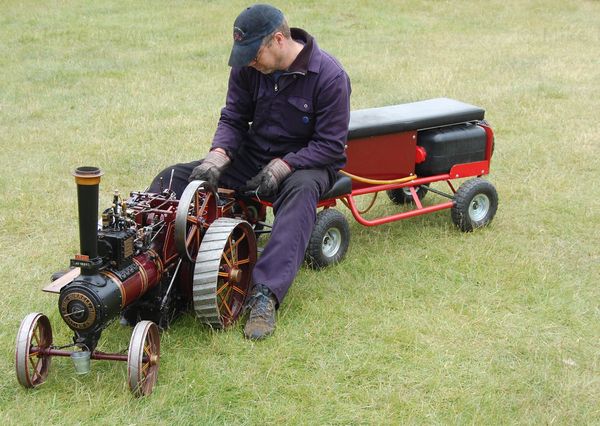
There was a diesel generator a short distance from our tent but during the day you couldn't really hear it. At night when everything was quiet, the noise of the generator became quite noticeable.
It rained a bit overnight but we managed to put our tent away during the brief window of dry weather. It started raining again shortly before the show opened and kept raining all day. This meant is was a very slow start on the monday - we were waiting ¾ of an hour for the first members of the public to turn up. It got better as the day wore on and we got a few more visitors.
Most of the plants in our garden are there for one reason: to provide food. There are a few flowers there to provide a splash of colour, the biggest at the moment is the Clematis:
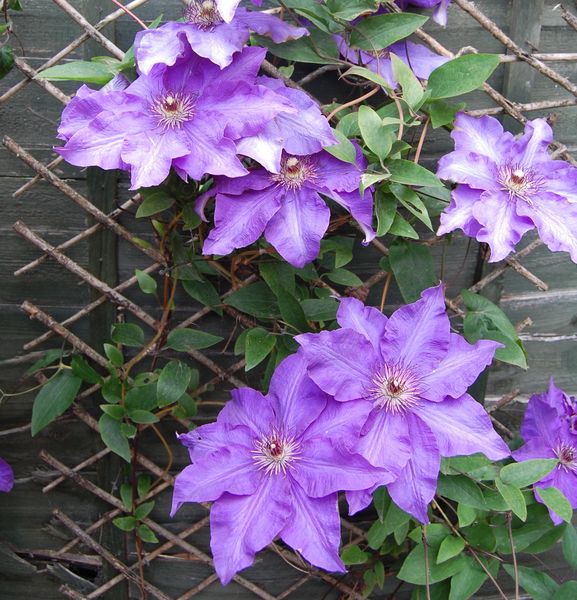
We originally bought the clematis because we had bought a trellis and needed something to grow up it. A couple of years ago it died off but when it grew back it was more vigorous than before.
We bought some viola plants about the same time and they lasted a couple of years before being eaten by slugs.
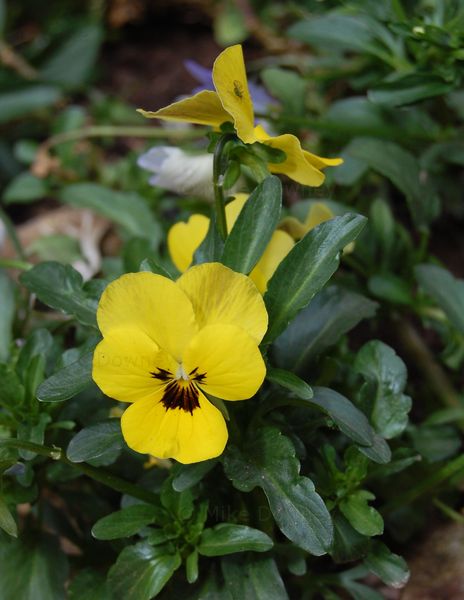
They managed to spread seeds around the garden and this plant established itself at the edge of the herb bed, next to the veg patch.
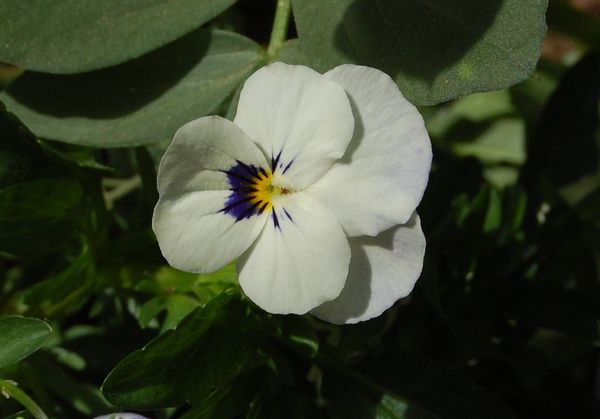
I don't know whether violas have a good or bad effect on other plants - I'm not really up to speed with companion planting but my brief reading on the subject suggests that they go well with herbs so I'll leave the plants there for now.
Meatball and Quail Egg Lasagne |
Story location: Home / Blog / food_and_drink / |
| 21/May/2011 |
The lasagne came about because we had some fresh lasagne sheets in the fridge. The meatballs in the sauce meant the lasagne was a bit tricky to eat but the mixture of quail eggs and meatballs meant that each mouthful tasted different.

The meatballs contained turkey mince, grated cheese and seasoning. The tomato sauce was cooked down for a couple of hours to concentrate the flavours.
Radish |
Story location: Home / food_and_drink / |
| 15/May/2011 |
This year I decided to grow some radish. I do like it but it isn't a vegetable I eat very often. It has a reputation for growing very quickly and I wasn't disappointed. The seeds germinated within a fortnight and the radish themselves had started to form within a few weeks. I thinned them out to give the roots more room to grow and the I harvested the end result today.
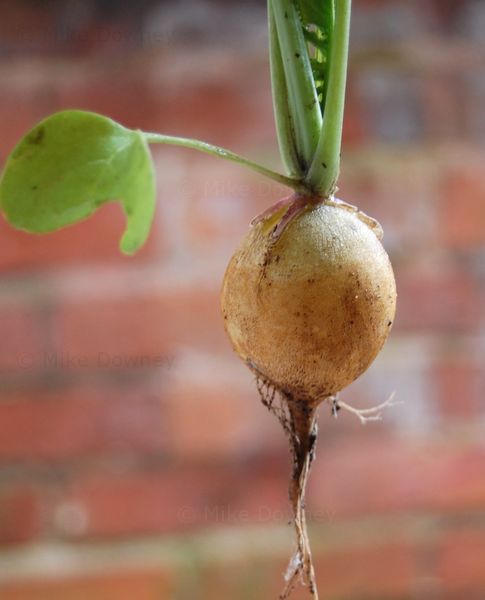
These are Zlata radish, which are yellow instead of the more familiar red radish available in the shops. The taste is very similar with a very slight hint of fieriness.
I read recently that some gardeners use radish to mark the end of rows of seeds, since they grow so quickly you can easily see where seeds have been planted to save having to use wooden or plastic row markers. I decided to try that earlier in the week when I re-seeded a few rows of vegetables which had failed to germinate. I couldn't tell exactly where I had planted the seeds but this time the radish 'end markers' should help.
First red pepper of the season |
Story location: Home / Blog / food_and_drink / |
| 10/May/2011 |
Last year I grew some pepper plants from seed. They weren't very successful and I only managed to get a few ripe peppers from them before the season finished. I had read that it is possible to keep the plants alive over the winter and this will give them a head start in the spring.
I had one pot with 2 small pepper plants which I kept in the front room. One of the plants started flowering around february and has just given us our first ripe pepper of the season.

It's fairly small and I haven't eaten it yet so I don't know whether it is any good or not. Last years peppers were all slightly bitter and under-ripe tasting no matter how long I left them to ripen. Since none of the pepper seeds have germinated this year, the only home-grown peppers I'll be getting will be from the one year old plants.
Crayfish and salsa verde sauce |
Story location: Home / food_and_drink / |
| 01/May/2011 |
We are a fan of puff pastry but we don't eat it very often. Every now and then we get some sausage rolls or a puff pastry pie but recently we keep seeing ready made puff pastry on offer in the supermarkets.
Tonights tea was a crayfish tart with a 'garden herb' salsa verde.
To make the sauce:
- Gently fry a couple of cloves of garlic in olive oil for a couple of minutes then add to the liquidizer.
- Add a mixture of herbs, including water cress, rocket, oregano, mint and parsley. I had some 'fat hen' in the garden so I sautéed that in oil until it had wilted before adding it.
- Drain and add a tablespoon of capers and a couple of anchovies.
- Liquidize everything, adding a splash of oil to make a sauce.
Spread the sauce on the pastry then top with roast red peppers, crayfish and feta cheese. Cook for 20-25 minutes at gas mark 6 then serve with a rocket and feta salad.

Fat Hen Crispy Seaweed |
Story location: Home / Blog / food_and_drink / |
| 01/May/2011 |
We have some Fat Hen growing in the garden, courtesy of the 'Edible Leaves, Roots and Shoots' seed pack which came from Garden Organic at Ryton. Most of the plants in the pack are mainly considered weeds so I had sprinkled the seeds in a potato planter in an attempt to stop the plants from spreading too far in the garden. The most prominent leaves at the moment look like they could be Fat Hen so I read through my copy of the River Cottage 'Hedgerow' book by John Wright to see what I could do with it.
The most promising suggestion was to deep fry it and make a type of crispy seaweed. I washed and shredded the leaves then tried a couple of different versions. First I simply fried the leaves in some hot olive oil. The texture was very similar to crispy seaweed and olive-oil flavour gave it a nice edge. Restaurant seaweed often has a sweet & salty flavour so the 2nd attempt was marinated in soy sauce for a few minute before being fried. It was then sprinkled with a mixture of salt and brown sugar. This was much closer to 'real' seaweed. Since we have a lot of fat hen in the garden, it's good to know that we have a good recipe for it, and after tonight's tea we have 2 recipes.
